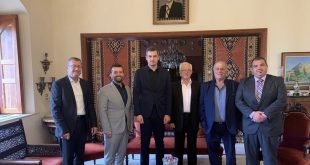Participants
The participants were 51 experienced Web users recruited by Sun (average level of Web experience was two years). Participants ranged in age from 22-69 (average age was 41). So that they can concentrate on “normal users,” we excluded the professions that are following the analysis: webmasters, Web designers, graphic designers, user interface professionals, writers, editors, computer scientists, and computer programmers.
We checked for aftereffects of age and Web experience on the dependent variables mentioned in the 1st five hypotheses, but we found only negligible differences-none significant. Had the websites inside our study been more challenging to navigate or had our tasks necessitated use of search engines or other Web infrastructure, we might have expected significant results of both age and Web experience.
The experiment employed a 5-condition (promotional control, scannable, concise, objective, or combined) between-subjects design. Conditions were balanced for employment and gender status.
Experimental Materials
Called “Travel Nebraska,” your website contained information regarding Nebraska. We used a travel site because 1) within our earlier qualitative studies, many internet users said travel is one of their interests, and 2) travel content lent itself towards the different writing styles we wished to study. We chose Nebraska to attenuate the end result of prior knowledge on our measures (in recruiting participants, we screened out people who had ever lived in, or even near, Nebraska).
Each form of the Travel Nebraska site consisted of seven Read More Here pages, and all versions used the same hypertext structure. In order for participants would give attention to text and never be distracted, we used hypertext that is modestwithout any links away from site) and included only three photos and something illustration. There clearly was no animation. Topics within the site were Nebraska’s history, geography, population, tourist attractions, and economy. The Appendix for this paper shows parts of an example page from each condition.
The control type of the site had a style that is promotional of (i.e., “marketese,”), which contained exaggeration, subjective claims, and boasting, instead of just simple facts. This style is characteristic of several pages on the net today.
The concise version had a promotional writing style, but its text was much shorter. Certain less-important information was cut, bringing the word count for each page to approximately half that of the corresponding page when you look at the control version. A few of the writing in this version was in the inverted pyramid style. However, all information users needed seriously to perform the mandatory tasks was presented within the same order in all versions for the site.
The scannable version also contained marketese, but it was written to encourage scanning, or skimming, for the text for information of interest. This version used lists that are bulleted boldface text to highlight keywords, photo captions, shorter sections of text, and more headings.
The objective version was stripped of marketese. It presented information without exaggeration, subjective claims, or boasting.
The combined version had shorter word count, was marked up for scannability, and was stripped of marketese.
The participant signed a videotape consent form, then was told he or she would visit a website, perform tasks, and answer several questions upon arrival at the usability lab.
The experimenter explained that he would observe from the room next door to the lab through the one-way mirror after making sure the participant knew how to use the browser. Through the entire study, the participant received both printed instructions from a paper packet and verbal instructions through the experimenter.
The participant began during the web site’s homepage. The initial two tasks were to search for specific facts (situated on separate pages within the site), without using a search tool or perhaps the “Find” command. The participant then answered Part 1 of a brief questionnaire. Next was a judgment task (suggested by Spool et al. 1997) when the participant first had to find information that is relevant then make a judgment about this. This task was followed by Part 2 regarding the questionnaire.
Next, the participant was instructed to expend 10 minutes learning whenever possible from the pages when you look at the website, when preparing for a exam that is short. Finally, the participant was asked to draw in some recoverable format the structure of this website, into the best of his or her recollection.
After completing the analysis, each participant was told details about the analysis and received a present.
Task time was the wide range of seconds it took users to find answers for the two search tasks and one judgment task.
The two search tasks were to resolve: “On what date did Nebraska become a state?” and “Which Nebraska city is the 7th largest, when it comes to population?” The questions for the judgment task were: “In your opinion, which tourist attraction would be the best one to see? Why do you believe so?”
Task errors was a percentage score based on the wide range of incorrect answers users gave within the two search tasks.
Memory comprised two measures from the exam: recognition and recall. Recognition memory was a percentage score in line with the quantity of correct answers minus the amount of incorrect answers to 5 questions that are multiple-choice. As an example, among the questions read: “which can be Nebraska’s largest group that is ethnic? a) English b) Swedes c) Germans d) Irish.”
Recall memory was a share score on the basis of the true amount of tourist attractions correctly recalled minus the number incorrectly recalled. The question was: “can you remember any names of places of interest mentioned within the website? Please utilize the space below to list all of the ones you remember.”
Time for you to recall site structure was the quantity of seconds it took users to attract a sitemap.
A related measure, sitemap accuracy, was a percentage score based on the amount of pages (maximum 7) and connections between pages (maximum 9) correctly identified, minus the wide range of pages and connections incorrectly identified.
Subjective satisfaction was determined from participants’ answers to a paper-and-pencil questionnaire. Some questions asked about specific components of working with the website, and other questions asked for an evaluation of how good adjectives that are certain the site (anchored by “Describes the site very poorly” to “Describes the site very well”). All questions used 10-point Likert scales.
 شبكة الأخبار اللبنانية والدولية
شبكة الأخبار اللبنانية والدولية



